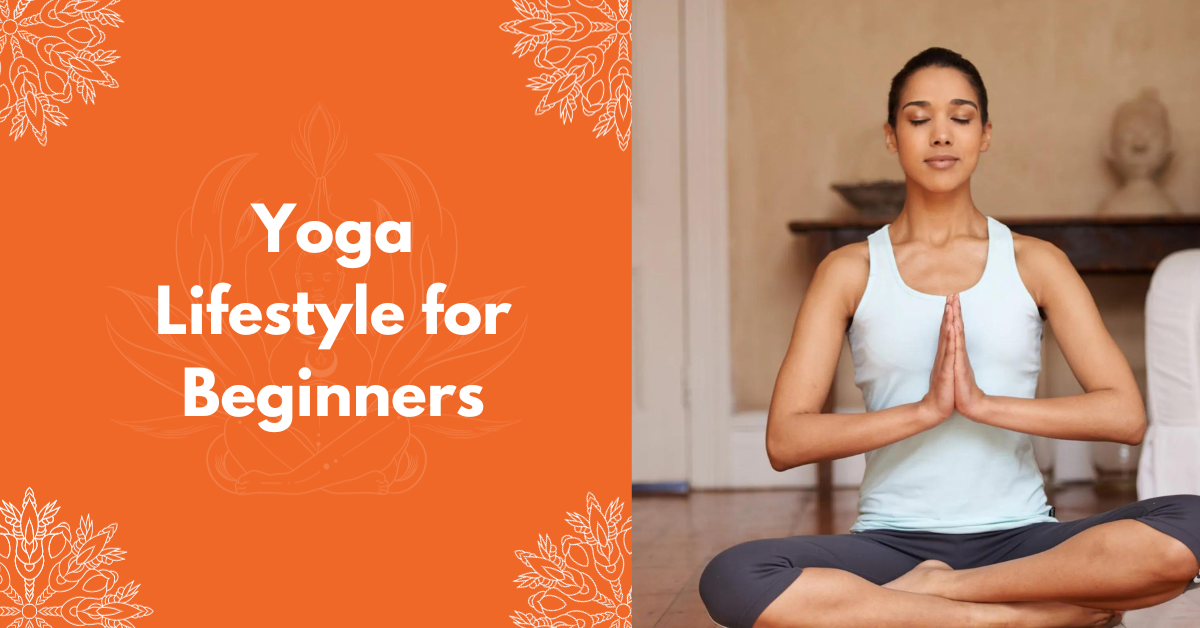
Yoga Lifestyle for Beginners
“Embark on a transformative journey with yoga lifestyle for beginners. Start your path to wellness, balance, and inner peace today.”
Are you ready to step onto the yoga mat and explore the serene world of the yoga lifestyle? For beginners, yoga is more than just a physical practice; it’s a holistic journey that nurtures the mind, body, and spirit. In this comprehensive guide, we’ll delve into the nuances of the “Yoga Lifestyle for Beginners,” providing insights, practices, and tips for those taking their first steps on this transformative path.
The Yoga Lifestyle Unveiled
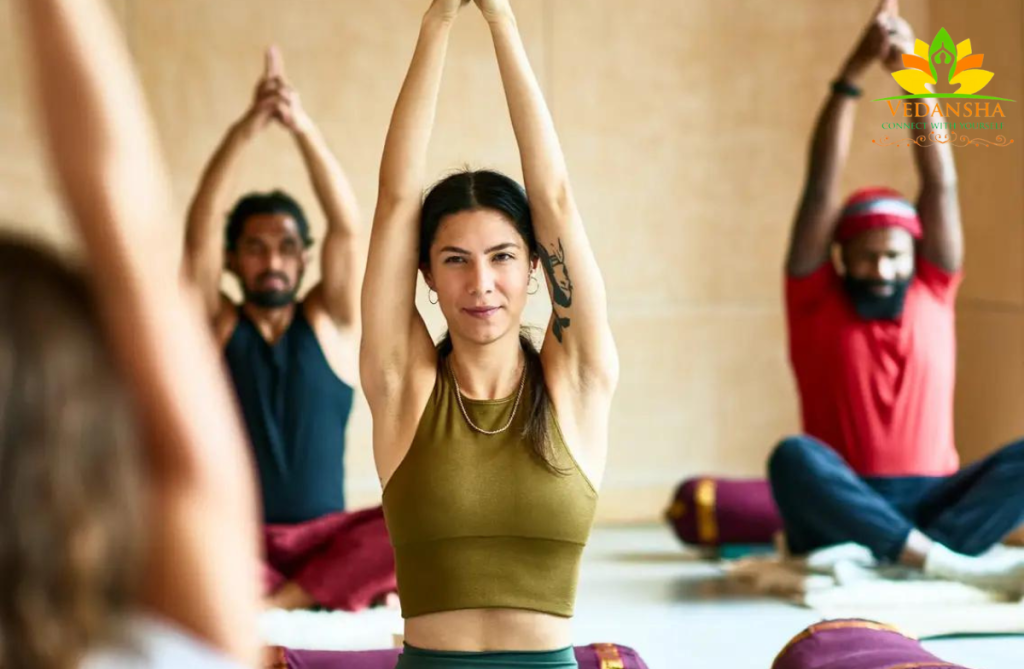
What is Yoga Lifestyle? At its core, the yoga lifestyle goes beyond the physical postures you see in a yoga class. It’s about understanding the essence of life itself. Yoga seeks harmony, balance, and inner peace. It’s a path that encourages us to explore our own inner landscape, both physically and mentally. It’s a journey of self-discovery that extends far beyond the boundaries of the yoga mat.
The Eight Limbs: The yoga lifestyle is often associated with the “eight limbs of yoga,” a philosophy outlined by the sage Patanjali in the Yoga Sutras. These limbs provide a comprehensive guide to living a purposeful and meaningful life. They include moral and ethical principles (Yamas and Niyamas), physical postures (Asanas), breath control (Pranayama), sensory control (Pratyahara), concentration (Dharana), meditation (Dhyana), and the ultimate state of enlightenment (Samadhi). Embracing these limbs in daily life helps individuals cultivate a deeper understanding of themselves and their connection to the world.
Benefits of Embracing Yoga Lifestyle
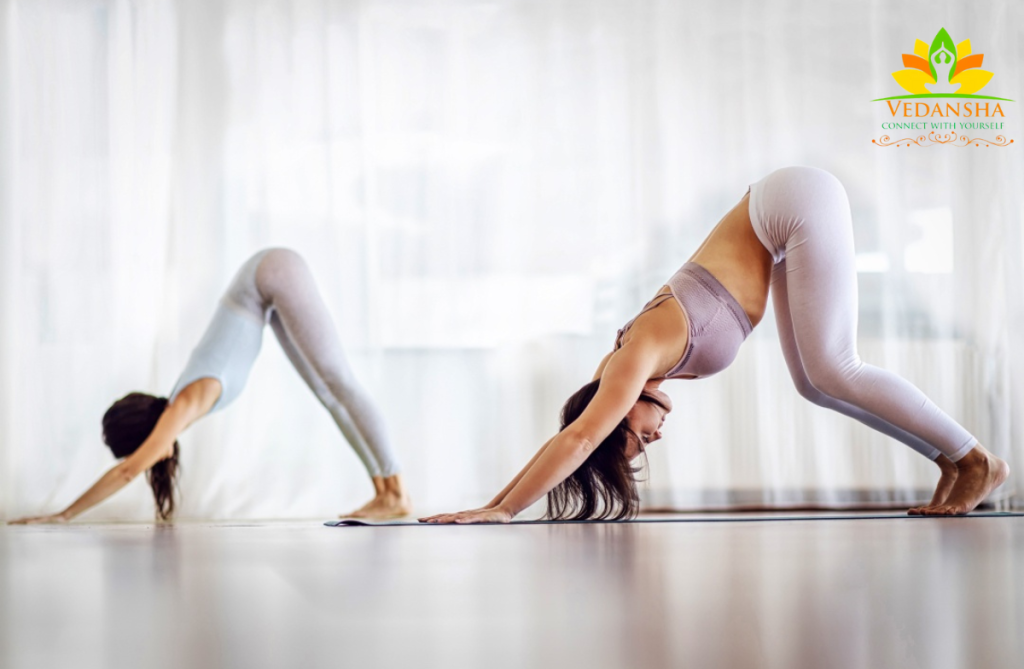
Physical Well-being: One of the most apparent benefits of embracing the yoga lifestyle is the improvement in physical well-being. Regular yoga practice enhances flexibility, strength, and overall fitness. It gently challenges the body, increasing muscle tone and promoting a sense of vitality.
Mental Clarity: The practice of yoga also contributes to mental clarity. Through asanas (postures) and pranayama (breath control), individuals can enhance their mental focus. Yoga offers a space to leave the chaos of daily life behind and be fully present on the mat. This mental clarity extends beyond the mat, helping practitioners approach challenges and decisions with greater insight.
Emotional Balance: The yoga lifestyle encourages the cultivation of emotional intelligence and resilience. Through self-reflection and meditation, individuals can develop a deeper understanding of their emotions. This heightened awareness enables them to respond to life’s ups and downs with greater equanimity. Yoga teaches us to ride the waves of our emotions gracefully.
Beginning Your Yoga Journey
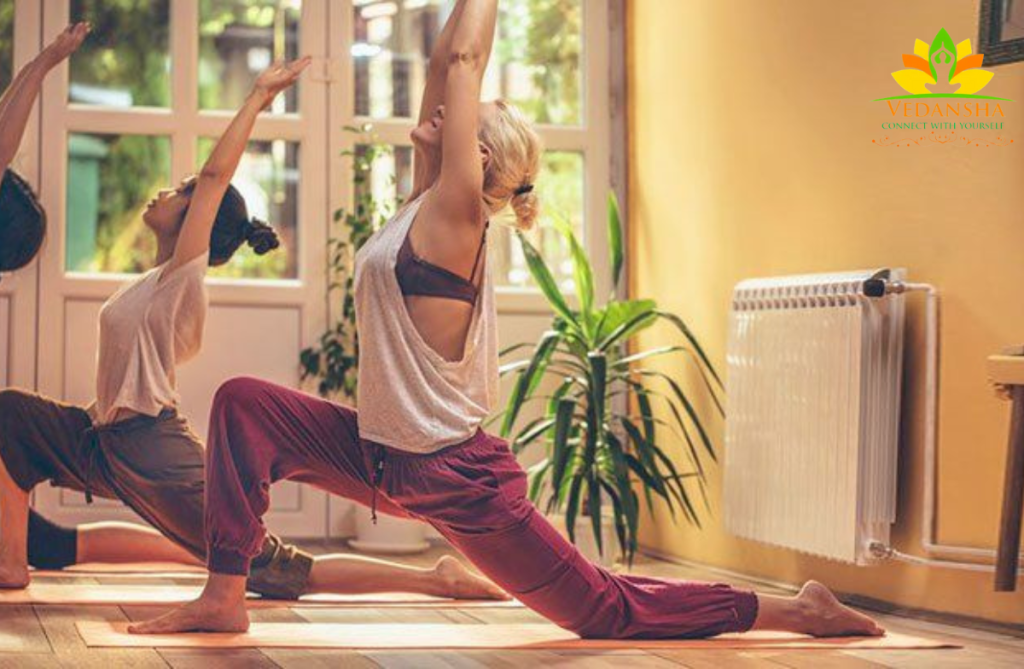
Choosing the Right Style
- Hatha Yoga: Hatha yoga is often considered ideal for beginners. It focuses on basic poses and gentle movements, providing a solid foundation for your practice. It’s an excellent starting point to understand the alignment and principles of yoga.
- Vinyasa Yoga: If you’re drawn to a more dynamic practice, vinyasa yoga may be your style. It’s known for its flow, synchronizing breath with movement. This style challenges your endurance and helps you build strength and flexibility.
- Yin Yoga: For those seeking a slower and more meditative approach, yin yoga is a great choice. It targets deep connective tissues, promoting flexibility and a sense of inner peace.
Necessary Equipment
- Yoga Mat: Your yoga mat becomes your sanctuary. It provides a non-slip surface for your practice, ensuring safety and comfort. Choose a mat that suits your needs, whether you prefer extra cushioning or a more eco-friendly option.
- Yoga Clothing: Comfortable and breathable attire allows for ease of movement. Look for moisture-wicking fabric to keep you dry during a vigorous practice.
- Props: Blocks, straps, and cushions are invaluable for support and alignment during poses. They help individuals of all levels adapt their practice to their unique needs and abilities.
Yoga Poses for Beginners
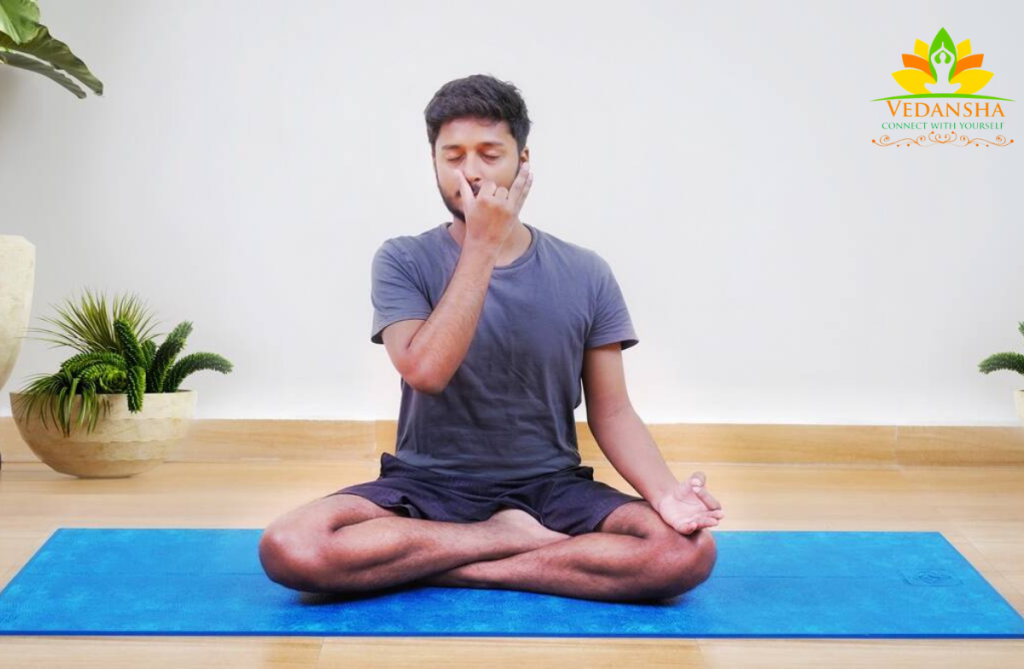
Mountain Pose (Tadasana)
Alignment: Stand tall with your feet hip-width apart. Distribute your weight evenly, engage your core, and roll your shoulders back and down.
Benefits: Mountain Pose improves posture, balance, and body awareness. It’s a foundational pose in yoga, teaching individuals how to stand with strength and grace.
Child’s Pose (Balasana)
Alignment: Begin on your hands and knees, then sit back on your heels and stretch your arms forward. Let your forehead rest on the ground.
Benefits: Child’s Pose relaxes the mind and gently stretches the back. It’s often used as a resting pose during practice, providing a moment of calm.
Downward-Facing Dog (Adho Mukha Svanasana)
Alignment: Begin in a push-up position, then lift your hips toward the ceiling. Spread your fingers wide and press your palms into the mat.
Benefits: Downward-Facing Dog strengthens the arms and legs while stretching the spine. It’s a dynamic pose that energizes the body.
Tree Pose (Vrksasana)
Alignment: Stand on one leg and place the sole of the other foot against your inner thigh or calf. Bring your hands together at your heart center or extend them upward.
Benefits: Tree Pose enhances balance and concentration. It’s a pose that cultivates stability and grace.
Cobra Pose (Bhujangasana)
Alignment: Lie face down, place your hands beneath your shoulders, and lift your chest. Keep your elbows close to your body.
Benefits: Cobra Pose strengthens the back and opens the chest. It’s an invigorating pose that improves spinal flexibility.
Incorporating Yoga into Your Lifestyle
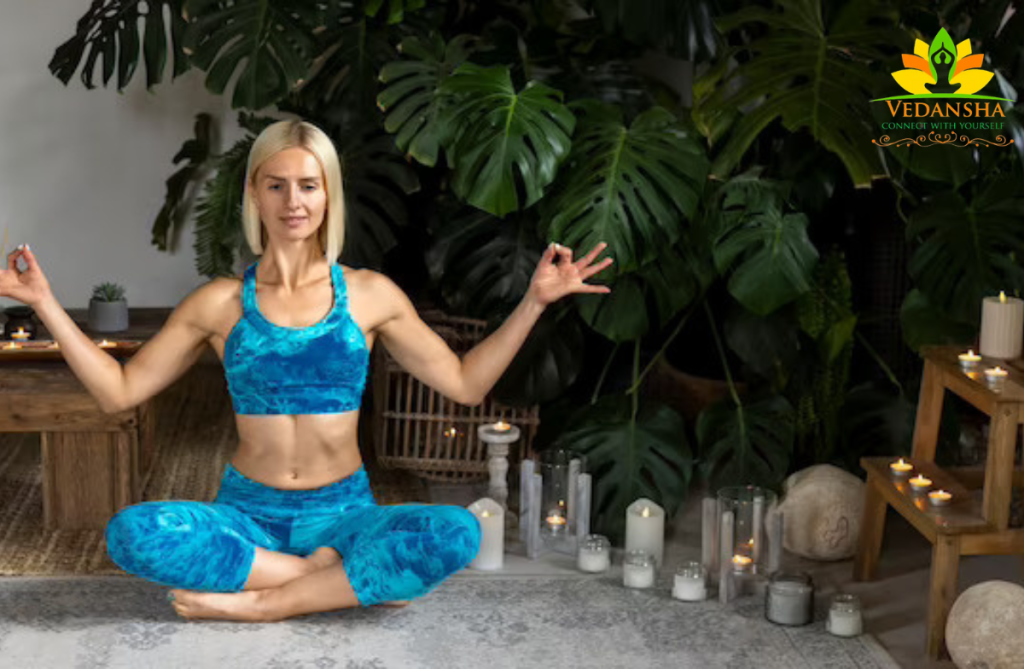
Daily Practice
- Consistency: Regardless of your experience level, it’s important to practice regularly. Even dedicating a few minutes each day can yield benefits. Establishing a consistent routine helps you build strength, flexibility, and mental clarity.
- Morning Routine: Beginning your day with a gentle yoga routine can set a positive tone for the day. It’s a moment to energize, ground yourself, and approach the day with intention.
Mindful Eating
- Nutrition: Embracing a balanced diet that nourishes your body and mind is a key component of the yoga lifestyle. A diet rich in fresh fruits, vegetables, whole grains, and lean proteins supports your physical and mental well-being.
- Eating Mindfully: In the rush of daily life, we often eat on autopilot. The yoga lifestyle encourages mindful eating, savoring your meals with awareness. It’s about appreciating the flavors, textures, and nourishment each bite provides.
Cultivating Inner Peace
Meditation
- Meditation Practice: Dedicate time each day to sit in silence, focusing on your breath or a mantra. Meditation is a practice of stillness, allowing you to quiet the mind and connect with your inner self.
- Benefits: Regular meditation reduces stress and anxiety, promoting mental clarity. It’s a powerful tool for achieving a sense of inner peace.
Breath Awareness
- Pranayama: Pranayama involves exploring various breathing techniques to enhance your breath awareness. It’s a practice that deepens your connection with your breath, a source of life and vitality.
- Breath and Emotions: Understanding the connection between your breath and emotions is a fundamental aspect of the yoga lifestyle. As you master your breath, you gain greater control over your emotional responses, leading to enhanced emotional balance and resilience.
This comprehensive guide to the yoga lifestyle aims to provide you with insights, tips, and techniques to embark on a fulfilling and transformative journey. Whether you’re new to yoga or a seasoned practitioner, the yoga lifestyle offers a path to well-being, self-discovery, and inner peace.
The Journey of Self-Discovery
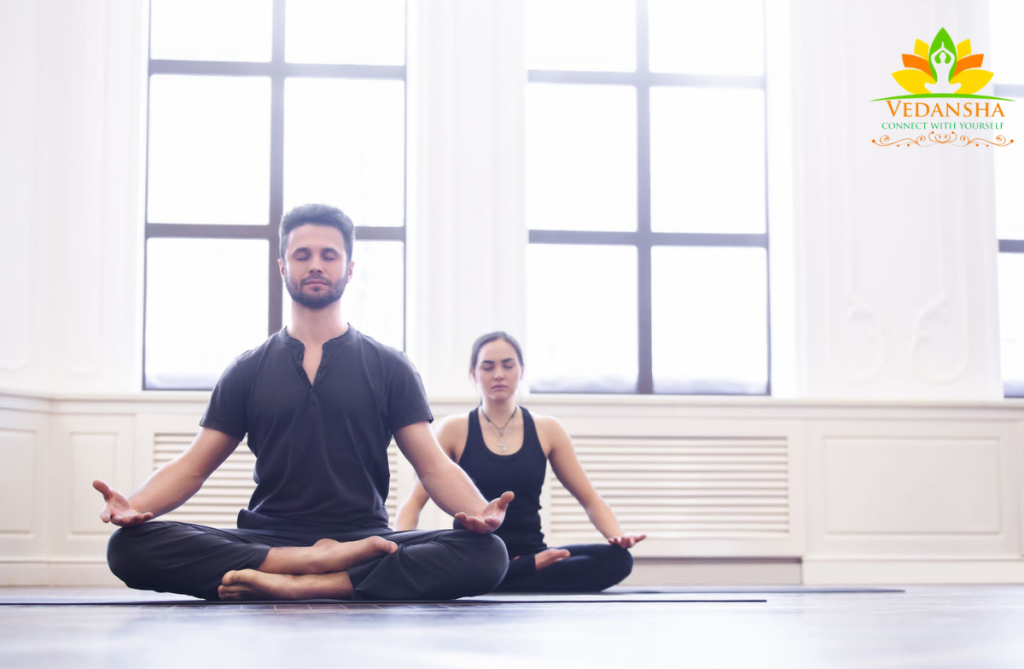
The yoga lifestyle is not just about physical postures and exercises; it’s a journey of self-discovery. As you delve deeper into your practice, you’ll uncover layers of yourself you may not have been aware of. This journey of self-discovery is both enlightening and transformative.
- Self-Reflection: Yoga encourages introspection. It’s a practice of looking within, understanding your strengths, limitations, and how you relate to the world around you.
- Self-Acceptance: Through yoga, you learn to accept yourself as you are. It’s about embracing both your strengths and your areas for growth with compassion.
- Mind-Body Connection: Yoga highlights the intricate connection between the mind and body. As you engage in asanas and pranayama, you’ll recognize how your thoughts and emotions influence your physical well-being.
The Power of Breath
Breath is at the core of the yoga lifestyle. It’s not just about inhaling and exhaling; it’s about the power of conscious breathing to affect your physical and mental state.
- Pranayama Techniques: Pranayama, or breath control, involves a range of techniques that go beyond basic breathing. These techniques help you regulate your breath to achieve specific outcomes, from relaxation to increased energy.
- Balancing Energy: The yogic belief is that breath controls the body’s vital energy, or prana. Through pranayama, you can balance this energy, improving your overall well-being.
Beyond the Mat
While yoga often starts on the mat, its principles extend into daily life.
- Yamas and Niyamas: These are moral and ethical principles that guide the yogic lifestyle. They include concepts like non-violence, truthfulness, contentment, and self-discipline. Embracing these principles can lead to a more harmonious and purposeful existence.
- Mindfulness: Yoga fosters mindfulness, the practice of being fully present in each moment. This quality extends beyond your practice and into everyday life, allowing you to engage with more awareness.
- Gratitude: The yoga lifestyle often emphasizes gratitude, recognizing the abundance in your life, no matter how small. This practice of appreciation can lead to a more positive and contented outlook.
The Community of Yogis
Yoga is not just an individual journey; it’s also a communal one. Yogis often find support, inspiration, and a sense of belonging in yoga communities.
- Supportive Environment: Yoga studios and classes provide a nurturing environment where you can connect with like-minded individuals. Sharing your yoga journey with others can be motivating and inspiring.
- Mentorship: Many experienced yogis find guidance from mentors or teachers who have walked the path before them. These relationships can be invaluable in deepening your practice.
The Yoga Lifestyle as a Personal Path
It’s essential to understand that the yoga lifestyle is a personal journey. What works for one person may not work for another. The key is to embrace the aspects of yoga that resonate with you and incorporate them into your life in a way that feels authentic.
In summary, the yoga lifestyle is a holistic approach to well-being. It encompasses physical, mental, and emotional facets of your life. As you embark on this journey, you’ll discover that yoga is not just a set of postures; it’s a way of living with intention, compassion, and self-awareness.
Conclusion: Yoga Lifestyle for Beginners
Embarking on a yoga lifestyle as a beginner is a journey of self-discovery, well-being, and inner transformation. The yoga mat becomes a sacred space where you nurture your mind, strengthen your body, and connect with your inner self. As you embrace this holistic way of life, you’ll discover a profound sense of balance and harmony.
FAQs for Yoga Lifestyle for Beginners
Can anyone practice yoga, regardless of age or physical fitness?
Absolutely! Yoga is inclusive and adaptable to all ages and fitness levels.
How long should a beginner’s yoga session be?
For beginners, starting with 20-30 minutes of practice is a good guideline. As you progress, you can extend your sessions.
Is it necessary to be flexible to practice yoga?
No, yoga can improve your flexibility over time. You don’t need to be flexible to start.
What are the benefits of a regular yoga practice beyond physical fitness?
Regular yoga practice can lead to enhanced mental clarity, reduced stress, and greater emotional well-being.
How can I maintain my yoga lifestyle when I have a busy schedule?
Even short, daily practices can make a significant difference. Consistency is more important than session duration.

